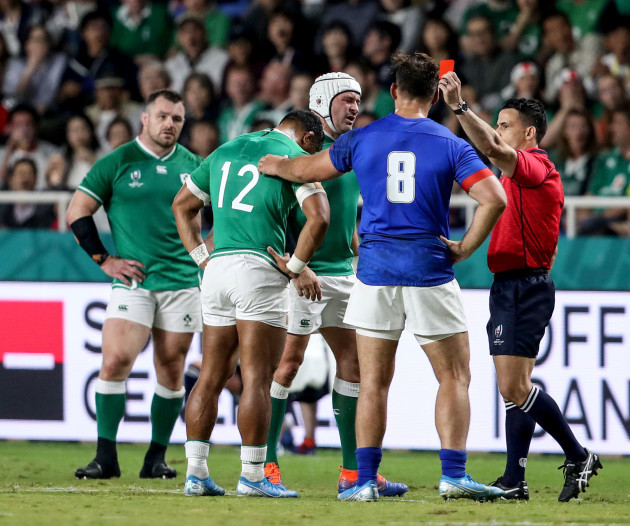WORLD RUGBY’S STRICT crackdown on high tackles at last year’s World Cup resulted in a dramatic reduction in the incidence of concussions, the sport’s governing body says.
Statistics released by World Rugby – currently gathered in Paris for a player welfare and laws symposium – show there was an overall drop of 28% in concussion incidence at the 2019 World Cup compared to the 2018 elite competition average.
Most encouragingly for World Rugby, the body’s data shows a 37% reduction in tackle concussion incidence at the World Cup, with the tackle having previously been shown to be most heavily linked with causing head injuries.
Match officials and disciplinary officers at the World Cup in Japan were encouraged to use World Rugby’s ‘high tackle sanctioning framework,’ which aimed to simplify the decision-making process around high tackles and shoulder charges.
While many supporters bemoaned yellow and red card decisions for ruining some games at the World Cup, World Rugby was enthused to see foul play being dealt with far more severely by match officials.
There was a 74% increase in yellow cards and a 138% increase in red cards at last year’s World Cup compared to the 2018 elite competition average.
While one tournament is obviously a small sample base, World Rugby is encouraged by the encouraging signs that the rate of concussion in the elite game could be reversed.
“World Rugby’s role is to provide the best-possible standard of care to our players, driven by an evidence-based approach,” said World Rugby chief medical officer, Éanna Falvey, who was previously Ireland’s team doctor.
“Rugby World Cup 2019 was the pinnacle of the men’s test game and a major platform to showcase best-practice in our sport. The medical standards implemented at the tournament achieved strong outcomes thanks to the buy-in from teams and medical staff.
“The high tackle sanction framework was introduced this year following compelling research that illustrates that the tackle is responsible for 76% of all concussions, the tackler sustains 72% of all concussions in the tackle and head injury is four times greater risk with high tackles.
“At Japan 2019, and all test matches since implementation in May 2019, we have been looking to protect players by changing culture and getting the tackler lower. These very positive outcomes suggest that teams embraced the challenge, resulting in a reduced injury risk, which is very encouraging.
“We will be presenting these findings at the second annual World Rugby Player Welfare and Laws Symposium this week and will continue to adopt a collaborative and evidence-based approach to understanding where we can further reduce the risk of concussion in our sport.”


